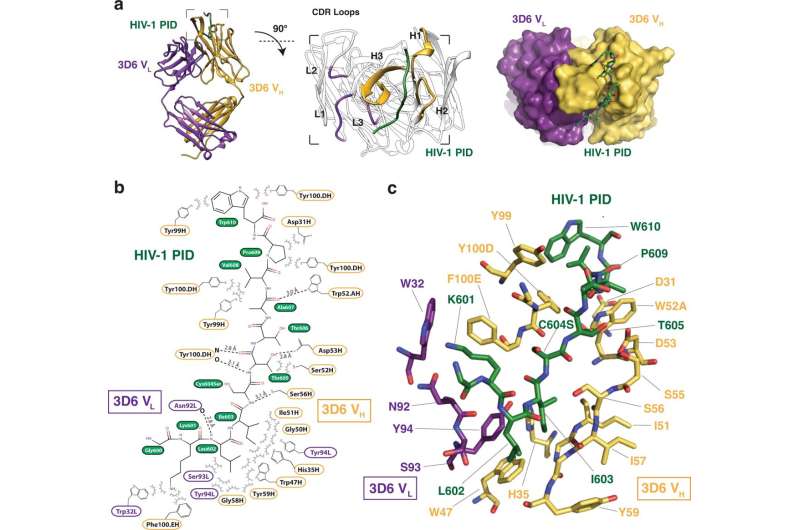New insights into HIV virus shed light on how it evades immune surveillance

About 36 million people have died from AIDS-related illnesses and approximately 38 million people globally are living with HIV.
Dr. Jonathan Cook, a resident physician specializing in medical microbiology at the University of Toronto, is investigating key proteins on the HIV virus that are crucial to developing an effective vaccine.
"These proteins are so interesting because they are necessary for a virus to infect a human," said Cook. "By blocking their function, we can avert the kinds of infections that you see routinely."
He and Adree Khondker in the lab of Prof. Jeffrey E. Lee from the Temerty Faculty of Medicine have published a paper in Communications Biology that reveals new information on how the HIV virus interacts with immune systems.
Using the CMFC beamline at the Canadian Light Source at the University of Saskatchewan, the research team analyzed the outer proteins on the HIV virus. They discovered that an area of one protein acts as a decoy—diverting the immune system's response towards a false target.
This tactic allows the virus to successfully infect human cells and to cause disease.
"The immune system recognizes this sequence on the virus, which is usually a good thing. But, in this situation, the antibodies that the immune system makes don't protect you from infection," Cook said.
With the help of the CLS, the researchers confirmed that this decoy area on the HIV protein shapeshifts to entice an ineffective immune response.
Cook and his colleagues hope that their research will provide a strategy for future vaccine design that will avoid this region—allowing for a better immune response and a more effective vaccine.
Cook has been using the CLS for over a decade and said the facility has benefited his work.
"We've been able to get research material on Monday, ship it to the CLS on Wednesday, and get our data set on Friday," Cook said. "It's really revolutionized the way we screened our research materials and has expedited our research."
More information: Jonathan D. Cook et al, Conformational plasticity of the HIV-1 gp41 immunodominant region is recognized by multiple non-neutralizing antibodies, Communications Biology (2022). DOI: 10.1038/s42003-022-03235-w





















